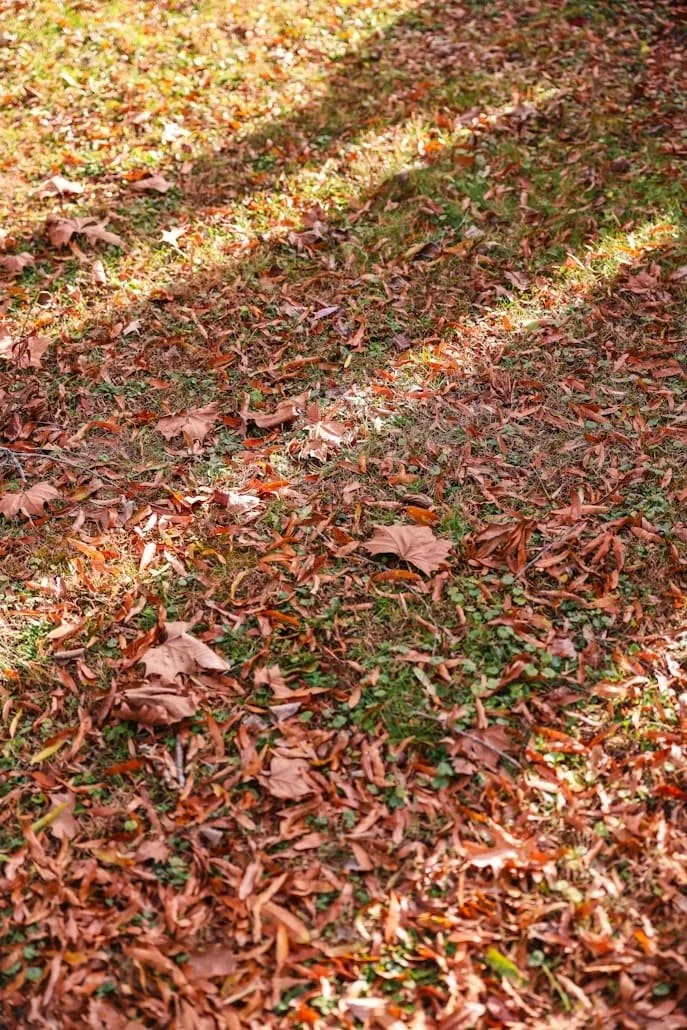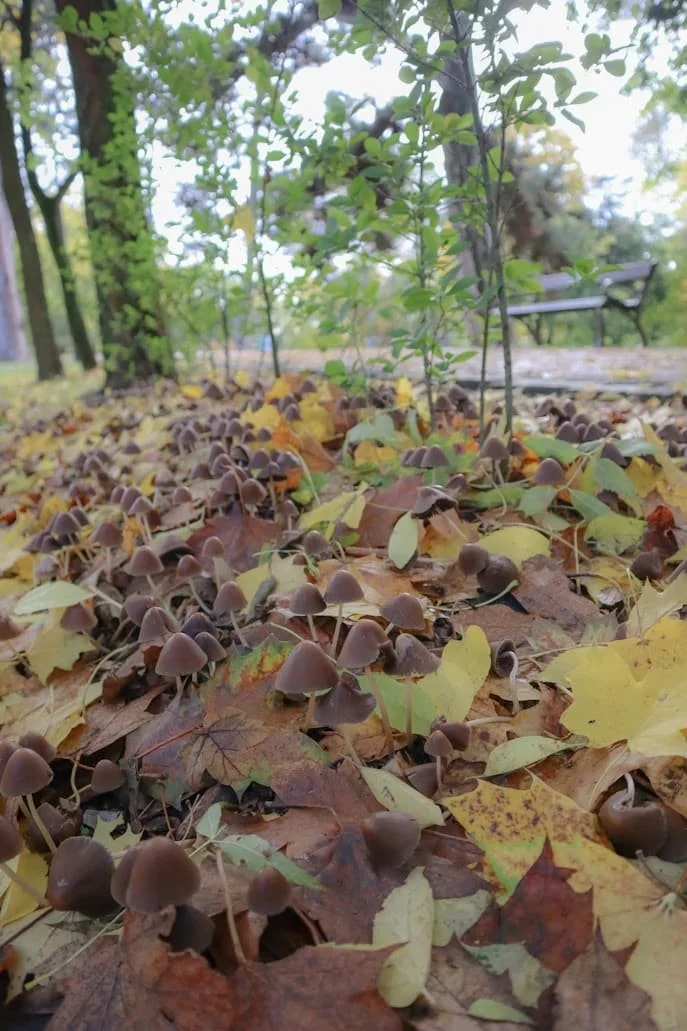Putting the Garden to Bed Without Losing Its Wild
Dear Friend,
By the third week of October, the rhythm of the year has shifted for good. The black gum leaves have already blazed their scarlet and dropped. The oaks are holding out, stubborn as ever, while the maples are throwing their final gold. Frost is flirting with the low valleys most mornings now, leaving a thin shimmer on the grass.
This is when gardeners start talking about “putting the garden to bed.” But I’ve come to think that phrase is misleading — as though we were tucking the garden in, smoothing the sheets, and shutting out all life until spring. In truth, the garden doesn’t sleep in winter. It just changes the tempo.
If we’re wise, we prepare our gardens in autumn in a way that protects and strengthens them for spring without erasing the ecological threads that carry life through the cold months. Too often, well-meaning fall cleanups strip away the very things that beneficial insects, birds, and soil organisms need to survive. Today, I want to walk you through how to “put your garden to bed” in a way that balances tidiness, plant health, and wild habitat.
Step 1: Rethinking the Purpose of Fall Cleanup
Traditional fall cleanup — cutting back every perennial, removing every stalk, and hauling away every leaf — was born out of two main motivations: aesthetics and disease control. While some sanitation is still essential, modern ecological horticulture shows us that the garden functions better when we leave intentional mess.
Think of it like this:
A neatly shorn perennial bed may please the human eye, but to a solitary bee looking for a hollow stem to overwinter in, it’s a desert.
A raked-bare lawn may look tidy, but it denies the soil its natural mulch and insulation.
Our goal is to maintain plant health and prevent pest or disease carryover without dismantling the food webs we’ve spent all season building.
Step 2: Evaluate Plant-by-Plant
Not every plant needs the same treatment in fall. Here’s how I break it down at Unicorn Farm and for client gardens:
Cut Back Now (disease or pest hosts)
Peonies (Botrytis blight spores overwinter on stems/leaves)
Bearded iris (leaf spot, borer larvae)
Any annual or perennial with confirmed powdery mildew, rust, or leaf spot
Technique:
Cut foliage to 2–3 inches above crown.
Dispose of diseased material off-site or hot compost (>140°F for 3+ days).
Leave Standing (structural interest + habitat)
Echinacea (seed heads for goldfinches)
Rudbeckia (same reason)
Monarda, Joe-Pye weed, and ornamental grasses (stem and crown habitat for insects)
Tip: Leave stalks at least 12–18 inches tall to preserve overwintering cavities for solitary bees.
Step 3: Soil Care Without Stripping the Bed
Old habit: clear the bed bare, then apply bark mulch.
Better method:
Leave most of the season’s organic matter in place — chopped leaves, broken stems, and spent foliage — unless diseased.
Top with a thin layer (1–2 inches) of shredded leaves or compost to suppress weeds and feed soil organisms.
This mimics the forest floor, where decaying plant matter is the foundation of fertility.
Scientific note: Decomposing plant material provides not just nutrients, but also a steady source of carbon to soil microbes. In perennial beds, fungi (especially mycorrhizal fungi) thrive on these inputs and, in turn, improve plant resilience.
Step 4: Manage the “Wild” With Boundaries
A healthy garden can be ecologically rich and visually intentional. In practice, this means:
Define edges — A crisp edge to a bed or a clean path makes any amount of “mess” inside look deliberate.
Cluster habitat areas — Group plantings or brush piles so that not every bed is left shaggy.
Use signage — For public or client landscapes, a simple “Pollinator Habitat Area” sign turns potential criticism into education.
Step 5: Protecting the Crown and Root Zone
For marginally hardy perennials or newly planted shrubs, fall is the time to add insulation:
Mulch crowns of plants like agastache or lavender with pine straw (good airflow, minimal rot risk).
For shallow-rooted species, use a 2–4 inch mulch layer after the first frost to delay soil freezing and thawing — which can heave plants out of the ground.
Appalachian tip: In very exposed areas, old-timers would lay evergreen boughs over marginal plants for both windbreak and snow capture. This still works beautifully today.
Step 6: Water Before the Ground Freezes
We often forget that soil moisture going into winter is crucial for evergreen plants and late-rooting perennials. Dry soil increases cold injury risk because frozen water molecules can’t move to plant cells during freeze-thaw cycles.
Here in Asheville, late October to early November is usually the last window for a deep watering before we start getting hard freezes.
Step 7: Wildlife-Friendly Cleanliness
Here’s where science and folksy tradition meet:
Remove only what’s diseased or will cause real damage (e.g., thick mats of leaves on turf).
Leave seed heads, standing stems, and some leaf litter in ornamental beds.
Maintain brush piles or log stacks in out-of-the-way corners.
This way, the chickadees still have seeds in January, the toads still have cover in February, and the early-emerging pollinators still have a place to pupate until April.
A Case Study: Client Bed Transition at Lake James
Last fall, we transitioned a client’s lakeside perennial garden into winter mode:
Cut back peonies and irises due to disease history.
Left all echinacea, rudbeckia, and ornamental grasses standing for winter structure and habitat.
Mulched with shredded oak leaves, 1 inch thick, over the entire bed.
Edged the bed with a crisp spade line to keep the look intentional.
In March, the client reported winter bird activity in the garden for the first time — goldfinches on the coneflowers, juncos feeding in the leaf litter.
Closing Thoughts
Putting your garden to bed shouldn’t mean shutting it down. It should mean transitioning it into a season of quiet productivity — where roots strengthen, soil builds, and wildlife finds refuge.
Here in the Blue Ridge, the gardens that thrive year after year are those where the gardener works with the land’s natural cycles, not against them. A little restraint in your fall cleanup can pay off in healthier plants, richer soil, and a livelier garden come spring.
So this October, as you walk your beds with shears in hand, pause before you cut. Ask: Will this harm the plant if I leave it? Could it feed a bird, shelter a bee, or nourish the soil? If the answer is yes, maybe the best “cleanup” is simply letting the wild remain.
Yours between the seasons,
Unicorn Farm Nursery & Landscaping

